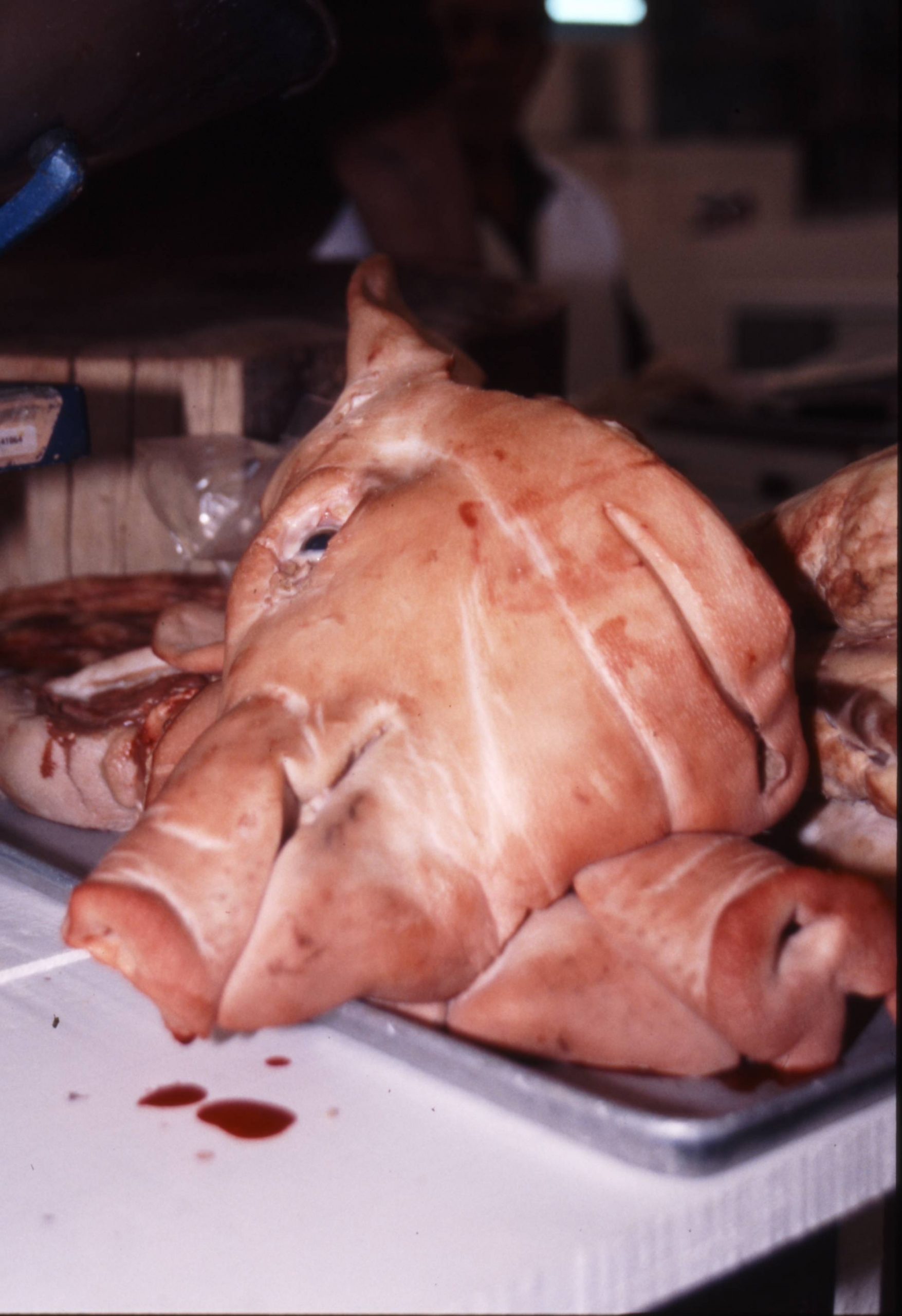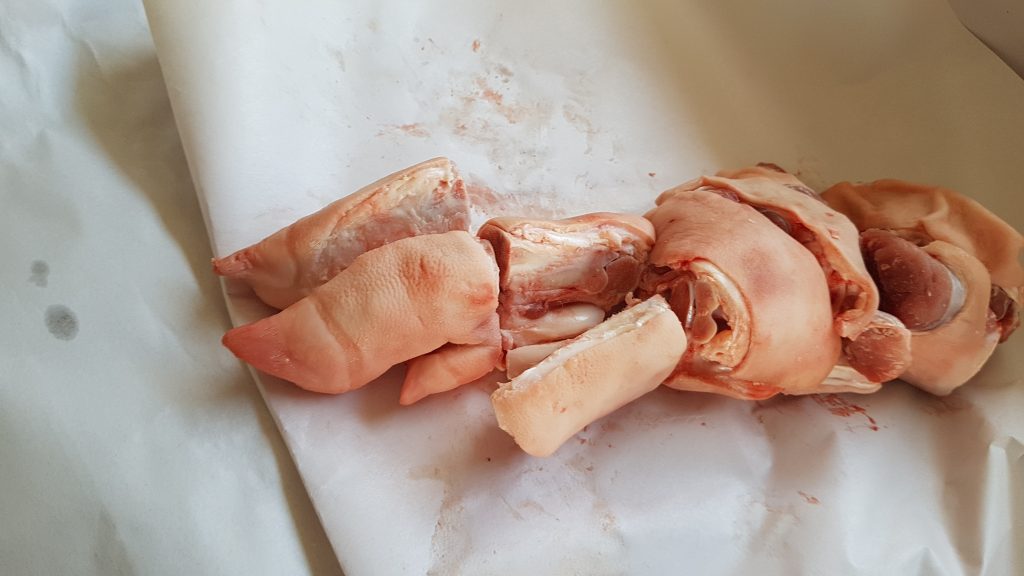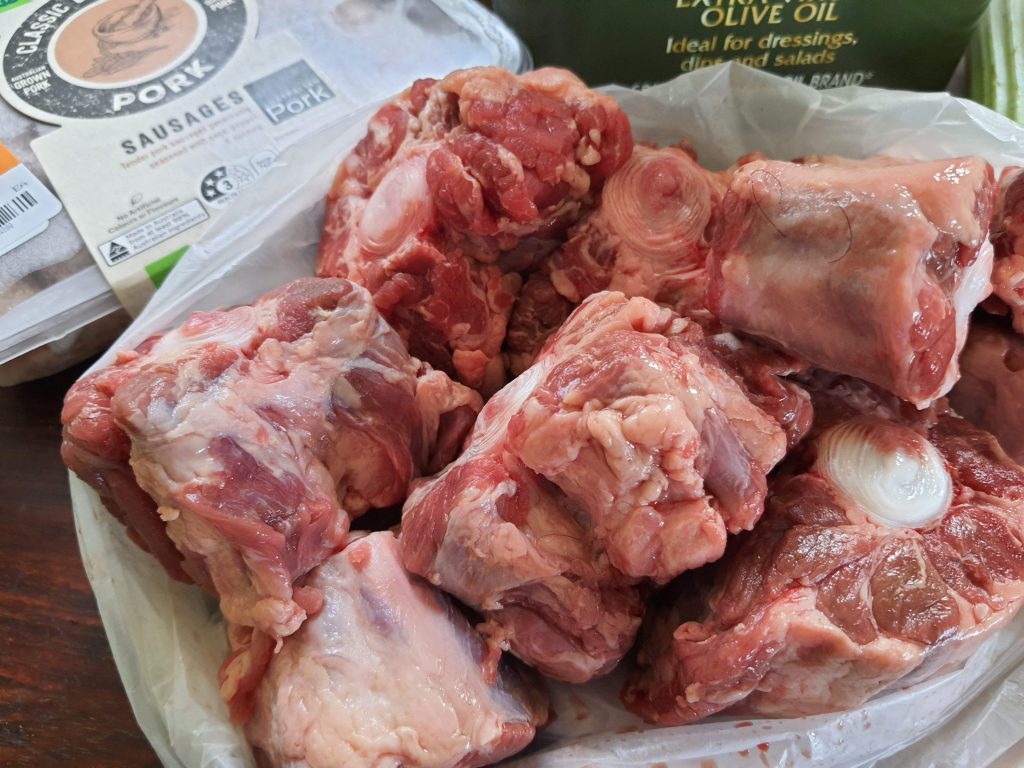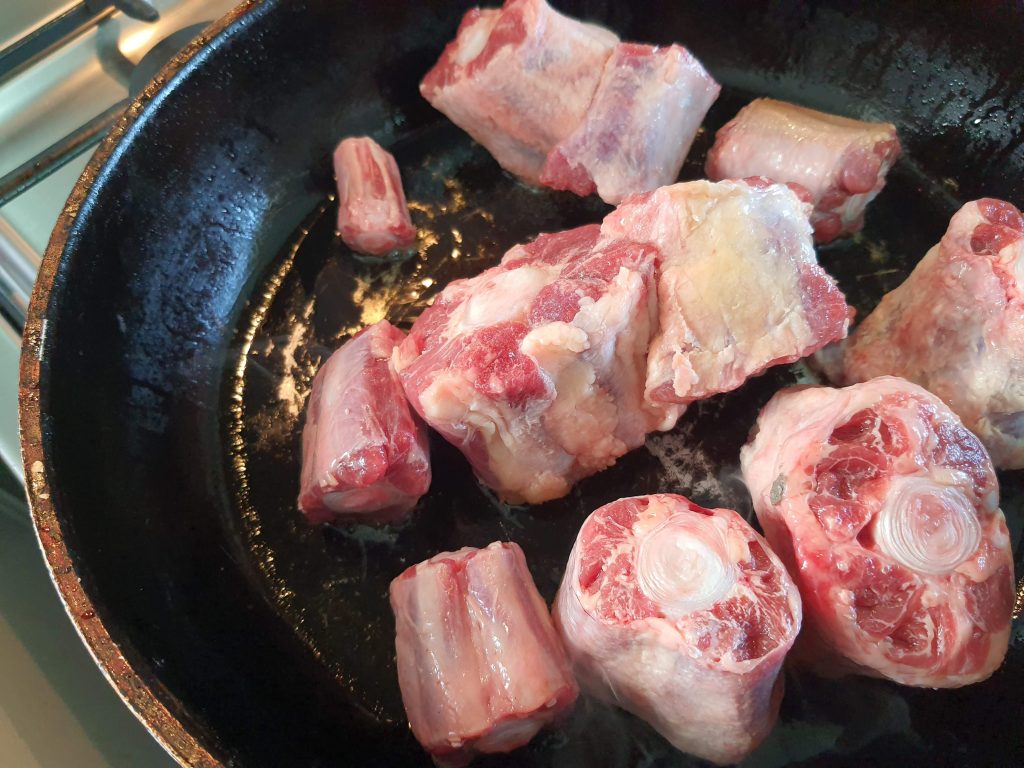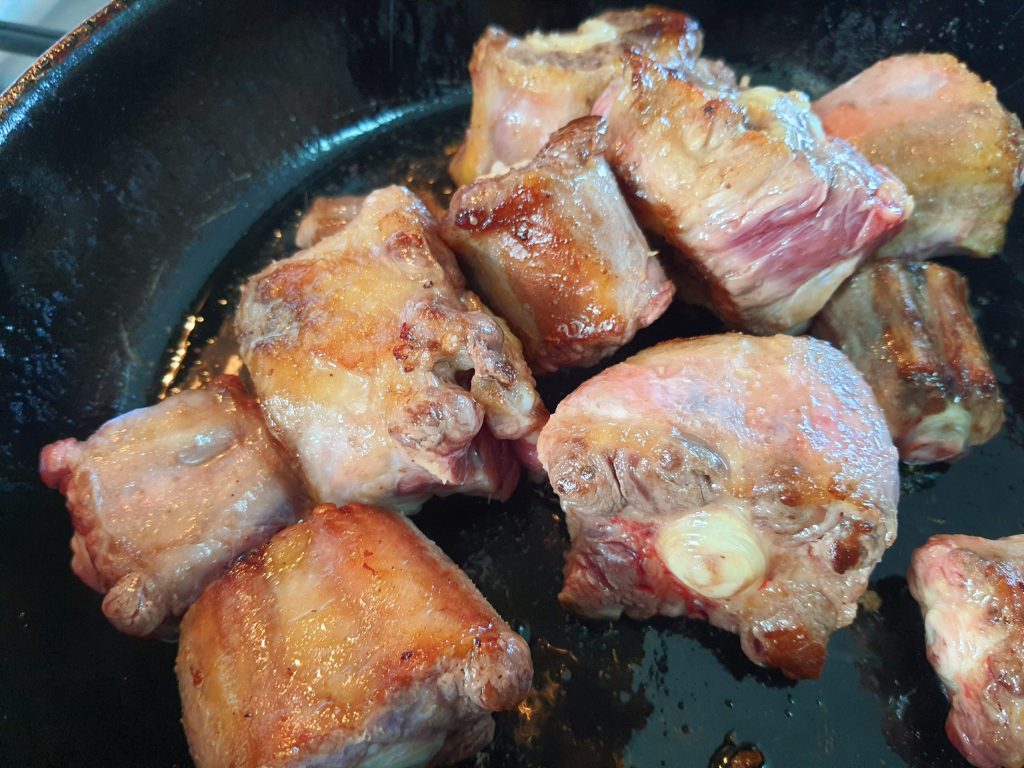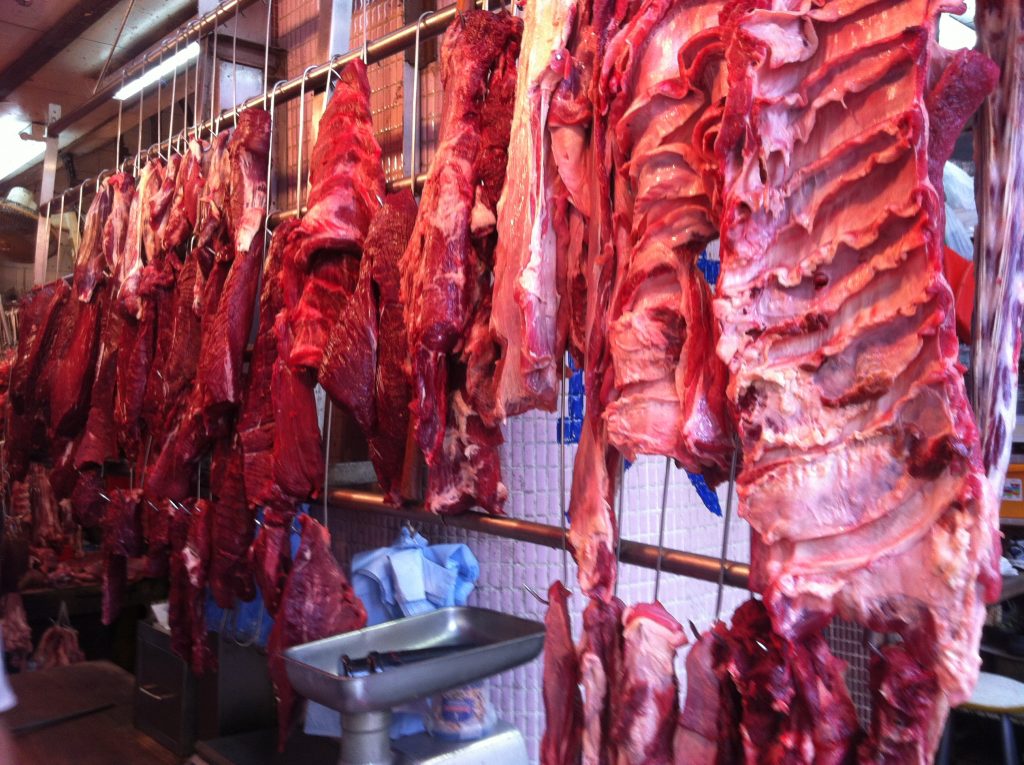INTRODUCTION

There are people who love offal and people that can’t stand it. I for one absolutely love it. There are many different types of varieties of offal. Offal actually usually refers to the edible organs mainly but there are also a lot of the parts of the animal’s body such as the head and the trotters that are also lumped into the same category
Offal is eaten all over the world. It is loved in a lot of countries and taboo in many others. It’s very popular in Europe, the Americas – North and South. And very popular all over Africa and also really popular in Asia.
A list of different parts of the animal body that are used for cooking are listed below:
Sweetbreads.
The intestines.
The skin.
Tripe.
Pancreas.
Testicles.
Tongue.
Spleen.
Trotters.
The snouts.
Lungs.
Liver.
Kidneys.
Hearts
The brain.
And blood.
Most of the Nordic and Germanic countries have a blood sausage similar to the black pudding you get in England or in Britain and quite a few have an equivalent of the Scotch Haggis. As I just mentioned before Scotland is famous for its haggis but there’s a similar dish in Romania called Drob. Liver pâte made popular all over the world by French cuisine is also very popular in many different cultures. In Vietnam it is a crucial ingredient in Banh Mi.
For decent sausages you need to use sheep’s or hogs’ intestines. A lot of the cheaper sausages or the more affordable sausages use a plant-based sausage skins or casings. They are usually made from collagen and cellulose. Faggots, a particular favourite of mine are a combination of liver, heart, fat and kidney of the pig. Some recipes call for breadcrumbs to give the meatballs more body and wrapped in caul. They are flavoured with herbs and pepper. They are usually served in onion gravy.
From Taiwan you get the very the popular blood cake that is served as cubes on a skewer. There are also deep-fried pork intestines.
And if you go to Yum Cha you will find dishes on the menu such as tripe in black bean sauce, chickens’ feet and pigs trotters. You will actually find tripe in several different ways.
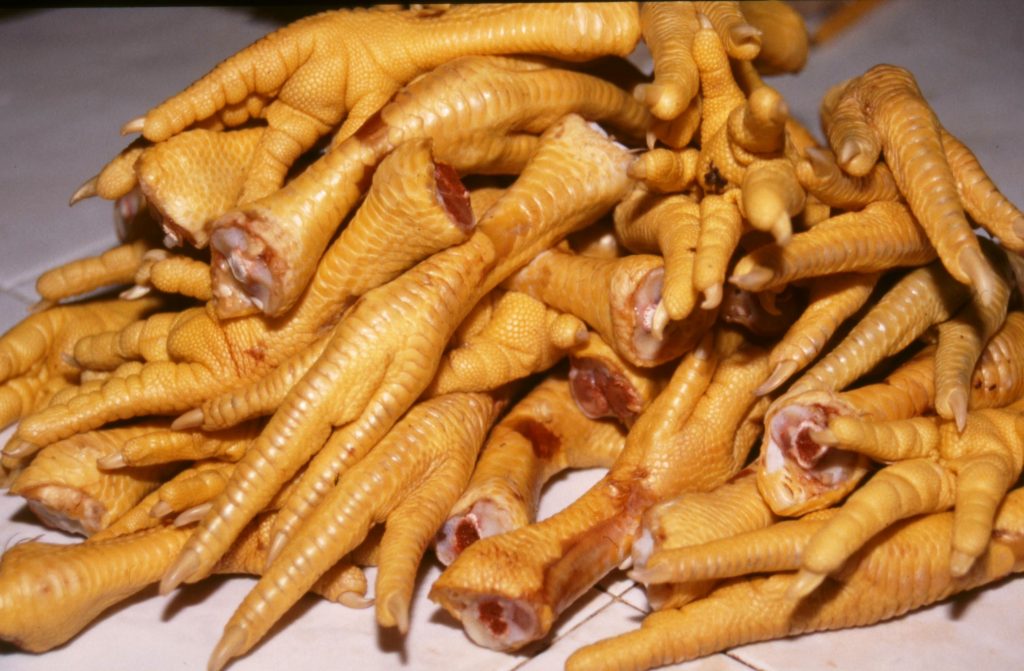
Chicken Feet 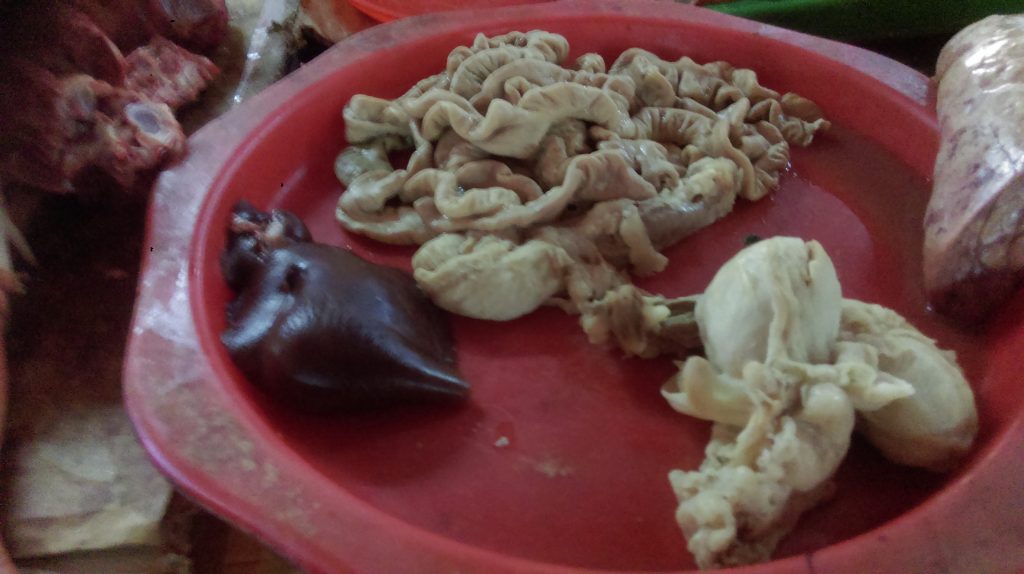
Sheep’s Liver, Intestines & Testicles – Mexico
In Japan chicken offal is often skewered and grilled over charcoal as Yakitori. You will find them served alongside drinks in an Izakaya which is a Japanese food pub. Pork trotters steamed in a special stock in Korea are considered a delicacy. Offal also has medicinal uses all over Asia
As the saying goes “we eat all of the pig except the oink”. And that is certainly the case in the Philippines. There are many different dishes in the Philippines made from pork or made from the pig such as Sisig that is from Pampanga. You will also notice the Spanish influence in the Philippines with dishes such as Bopis. It is a spicy Filipino dish made from pork lungs and hearts; sautéed with tomatoes, chilli and onions.
Offal can be a good addition to your diets. They are packed full of nutrients such as vitamin B12 and folates. They are also a really good source of iron and protein. The healthiest of the offal is liver. It is very nutrient rich organ meat and it is a very good source of vitamin and iron. Liver also has traces of copper in it that can cause problems if it’s had in excessive amounts so like anything, you eat offal in moderation. It is recommended that one dish a week of offal is sufficient for the average person. I would recommend that all offal you eat should be well cooked.
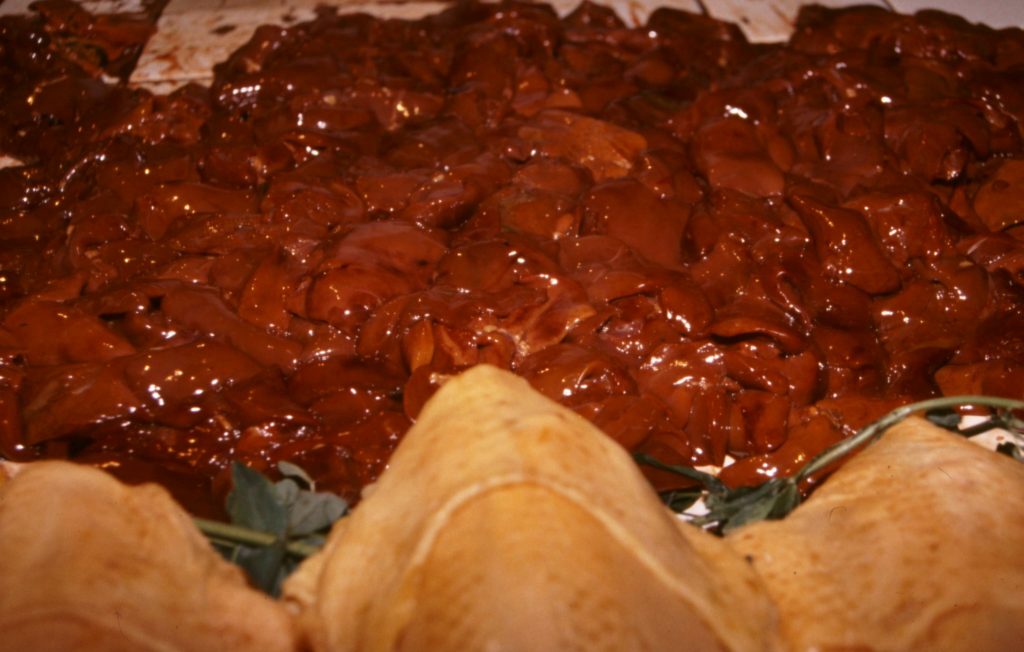
- LIVER – Liver must be one of the most popular offal out there. It comes in many forms or is cooked in many ways. It is presented in many different ways as well. A straightforward pan-fried liver that is, slices of cow’s or calf’s liver, dusted in seasoned flour and flash fried is one of the simplest ways you will be served liver. You will also find it served or cooked with onions and bacon in gravy, served with vegetables and mashed potato. This is very nice.
When I was in the states I was very confused when on the menu was something called London Broil I didn’t quite get it but then I realized it was liver, onions, bacon and gravy. I found it quite interesting that it was associated with London when I had never heard it called that before. I find that if you are going to have liver pan-fried, calf’s is by far superior to beef liver. Obviously, this is because it’s younger and tender. Dust it with flour and pan-fry it.
And the classic liver pâte is a very popular way that liver is used in the kitchen. Pâte is a blend of liver, pork fat, some onions, maybe some garlic, a drop of sherry and/ or brandy. Some recipes call for cream in it. I have even cooked with recipes that call for some choux pastry. It is normally cooked in a terrine dish that has been lined with streaky bacon, covered and baked in a Bain Marie in the oven. When cooled it can be sliced and serve with Melba toast. Or made in a little ramekin dishes and covered with clarified butter. It’s a classic.
Chicken livers are used to make pâte but they can also end up on the breakfast menu. Floured and pan fried and served with eggs on toast. Not for the faint hearted. Another very popular but a bit more controversial is Foie Gras, which is goose liver. Controversial due to the way the geese are force fed to fatten the liver.
A lot of people do not like this but to those that do, it’s a very expensive delicacy. To cook, it is floured and very quickly flash fried. If it sits in the frying pan for any length of time you’ll end up with a pan of melted fat like butter. This would be a very expensive way to waste your foie gras. It is also used to make for Foie Gras Pâte. Sometimes you make it to stuff it into little profiteroles as a starter or for canapés.
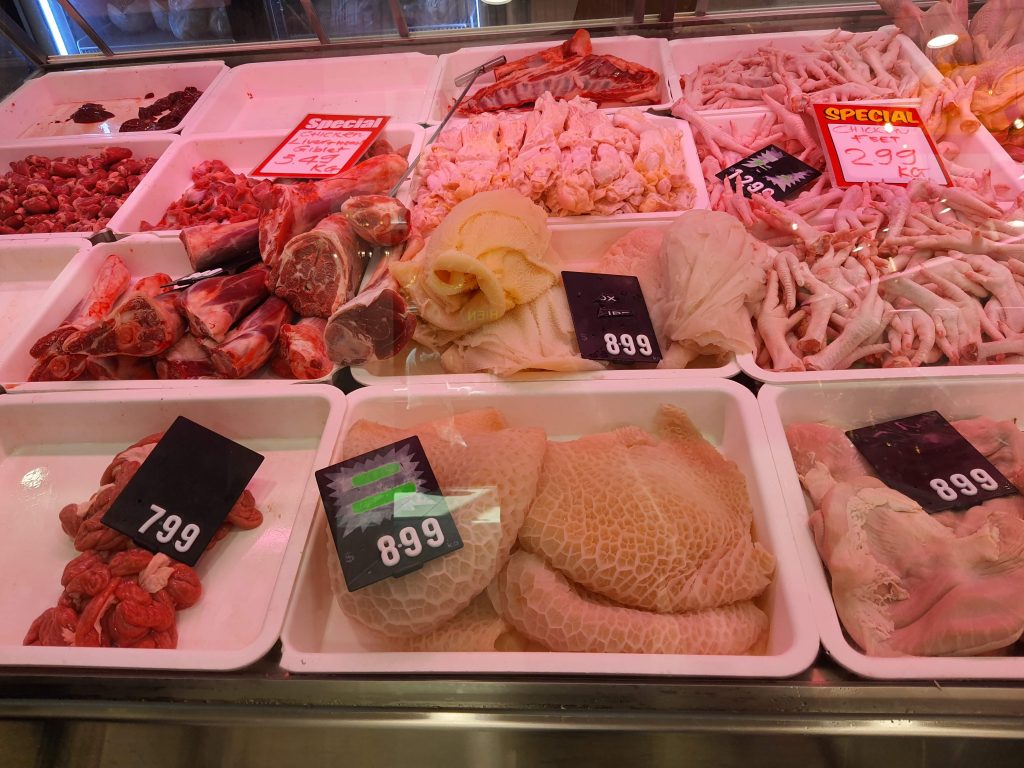
- KIDNEYS – When it comes to kidneys there are a variety of ways they are served up. Devilled kidneys on toast used to be all the rage. Deviled kidneys have been pan fried in butter with onions, a sprinkle of flour and a little bit of stock to make a binding sauce. The sauce has tomato puree and English mustard through it as well as a dash Worcester sauce. Served on nice crusty toast sprinkled with parsley. That used to be all the go.
Another dish I remember from my college days is kidneys Turbigo or was it sausages Turbigo? It was basically little chipolata sausages and kidneys that were cooked in a nice brown sauce with lardons of bacon and shallots through it. But one of the most popular dishes that you will find kidneys in is the good old Steak and Kidney Pie. I would always go steak and kidney pie if there was one on the menu. But taking it to the next level if there was steak and kidney pudding that would be my first choice. The only thing better than a steak and kidney pie is a steak and kidney pudding.
When using kidneys; to prepare them they are split in half and soaked in milk. The reason for soaking your kidneys in milk is to remove any traces of the animal’s bodily fluids and toxins. When I was a young trainee chef, this was a normal practice although I do not see it written on all recipes that I come across these days.
This method of cleansing offal with milk is also applied to the likes of liver and sweetbreads. It purges the bloods, lightens the colour and is said to improve the flavour as well.
- SWEETBREADS. Sweetbreads are the culinary term for the thymus or pancreas glands that are found near the throat and the belly or gut area. Sweetbreads are usually from calves or younger animals as in older animals the fatty tissue becomes more sinuous. Lambs sweetbreads are also used. Sweetbreads are classed as a delicacy.
To prepare sweetbreads they are soaked in milk to remove the animal juices and the impurities. After soaking them give them a rinse and blanch them in hot water. Bring them out of the hot water and plunge them into ice water then they are ready for the next step which is to pane them. Flour first then a beaten egg and then rolled in breadcrumbs and deep-fried. They are usually served with a piquant sauce like a mustard sauce but you will see so many different twists on this in the kitchens these days.
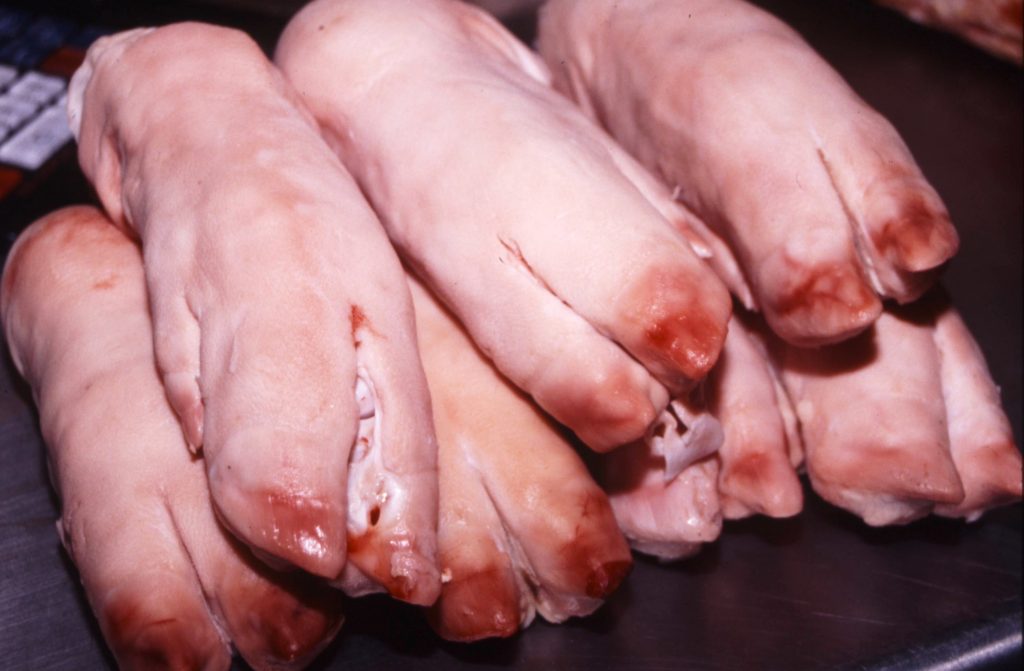
- TROTTERS – I love trotters and I would make more of them if I could go to the trouble of making them or if I were not so unhealthy for me. Let’s face it; all that goodness can’t be good for you. I have come across trotters served in so many ways. And most ways do involve a pressure cooker. I’ve done them in a nice tomato and onion sauce with lots of garlic, herbs and sprinkle of paprika. Cooked till they are about to fall off the bone. And then served with Mashed potato and vegetables.
Another way that was shown to me; many years ago, now was by a Chinese Malay friend of mine, she showed me how to cook them with soy sauce, Kecap Manis, star anise, garlic, dried chilies and that’s it. The hardest thing was getting the butcher to cut them to the size you wanted. Put them all in the pressure cooker and tighten the lid. At this stage I should say sometimes I put my own slant on it and started to throw in some dried Shitake mushrooms that just added another level of goodness to the whole dish. I usually cook them for about 40 minutes and then let them rest for 20 minutes. Then all you have got to do now is serve them on rice with some greens. Delicious.
Back in the 80s when I was a young chef a trend started of stuffed pigs’ trotters. Everyone was copying Pierre Kauffman’s stuffed pigs’ trotters. He held three Michelin stars. It involved boning out the trotters. There really was no meat inside so it just left the skin. The skin was then filled with sweetbreads and chicken mousse. Then it was trussed back into place and rolled tightly in foil. It is then covered with water and poached gently without boiling for three hours. Skimming continuously and making sure that the water did not boil dry. In the water you would have the usual ingredients for making a stock such as celery, carrots, leeks, onions and a bouquet garni.
Then the trotters were placed in a casserole dish with wine, stock, carrots, onions and port. Covered and cooked in the oven for three hours. After this it was cooked till crisp in the oven. It was a very involved preparation and it’s not surprising that’s you had to pay for it; as it took about 8 hours to prepare.

- OXTAIL – Oxtail is one of the most popular parts of the cow that is used for offal. As the cow only has one tail and everyone wants it; it is not surprising that when you go to the butchers there aren’t any. And being that when some people go to buy them they’ll have more than one tail, you can imagine how rare it can be to find that particular cut at the butchers.
The most popular use for oxtail is to make oxtail soup. Oxtail soup is a Brown soup made with beef stock, oxtail and diced vegetables; such as onions, carrots, celery and a bouquet garni. You would also have some tomato puree in it and a little flour to thicken it. The method is to coat the discs of oxtail in flour and seal them either on the stove or in the oven but preferably on the stove to sea in all the flavour. And then you add the stock and braise them. Another cut of meat that is good for the pressure cooker. I also cook the oxtails in a dense tomato sauce in the oven and serve them with polenta.
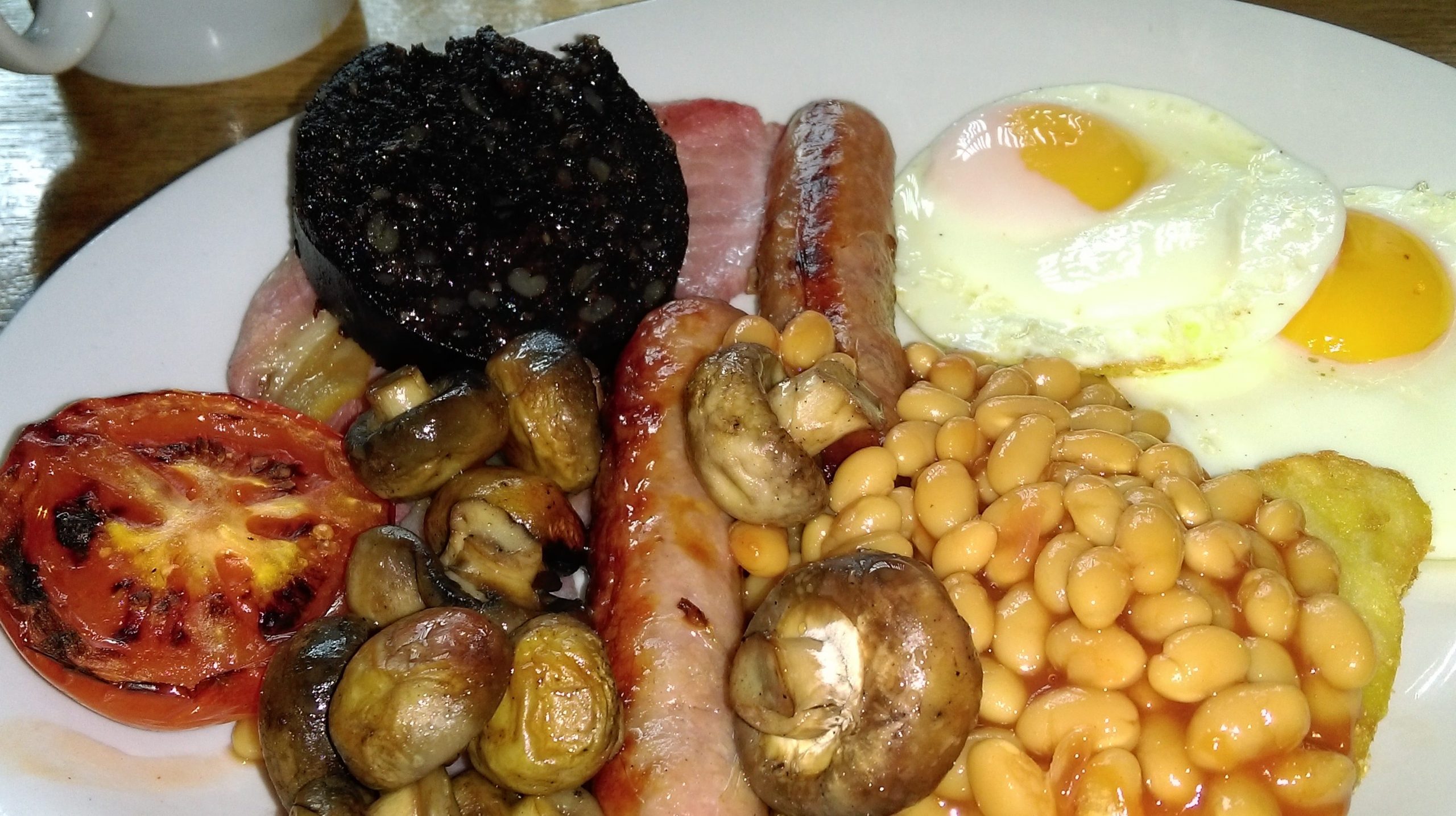
- BLOOD – Blood is used in many dishes in the kitchen although you wouldn’t know it. Some have gone out of fashion; some are still on the shelf. One of the most popular ones is black pudding. Black pudding is a blood sausage that originates in the United Kingdom and Ireland. It is usually made with pork blood and pork fat and a cereal, usually oatmeal. Although the makers try to keep it secret; from the taste of it there is sage, thyme and lots of white pepper through it.
Black pudding can be served by steaming it or by slicing it into rounds and pan-frying them. You will find it on the breakfast menu mainly. There are people that love it and others that would not go anywhere near it. I am one of the ones that love it. And believe it or not it is good for you. It is rich in iron as it contains blood. It has been classed as a Super-food due to its high iron and protein content. Black pudding appears all over Europe in many different cultures and as well as all around the world.
I have come across it in Asia and I’ve come across it elsewhere. Black pudding is not normally a dish you make at home simply because it is hard to get hold of fresh pigs’ blood and in my opinion, it is best left to the experts. Having said that I would love to learn how to make it or be witness to its being made. The issue will always be though you will need a pig to slaughter to get the blood from.
Another dish that calls for blood is Coq Au Vin. Coq Au Vin or more commonly known in English as chicken in red wine actually translate from French for cockerel in wine. It is a French dish made with chicken and using bacon lardons, mushrooms and garlic. The red wine of choice is usually Burgundy. Once the chicken has finish brazing it is then thickened with the fresh blood of the cockerel. This is not then boiled otherwise the blood would coagulate. In the restaurants this dish would be thickened with the blood and served immediately.
Another dish using blood as a thickener is Jugged Hare. Traditionally cooked in a jug that is placed in a pot of boiling water to cook the hare slowly. The sauce is then thickened at the end of cooking with the reserved blood.
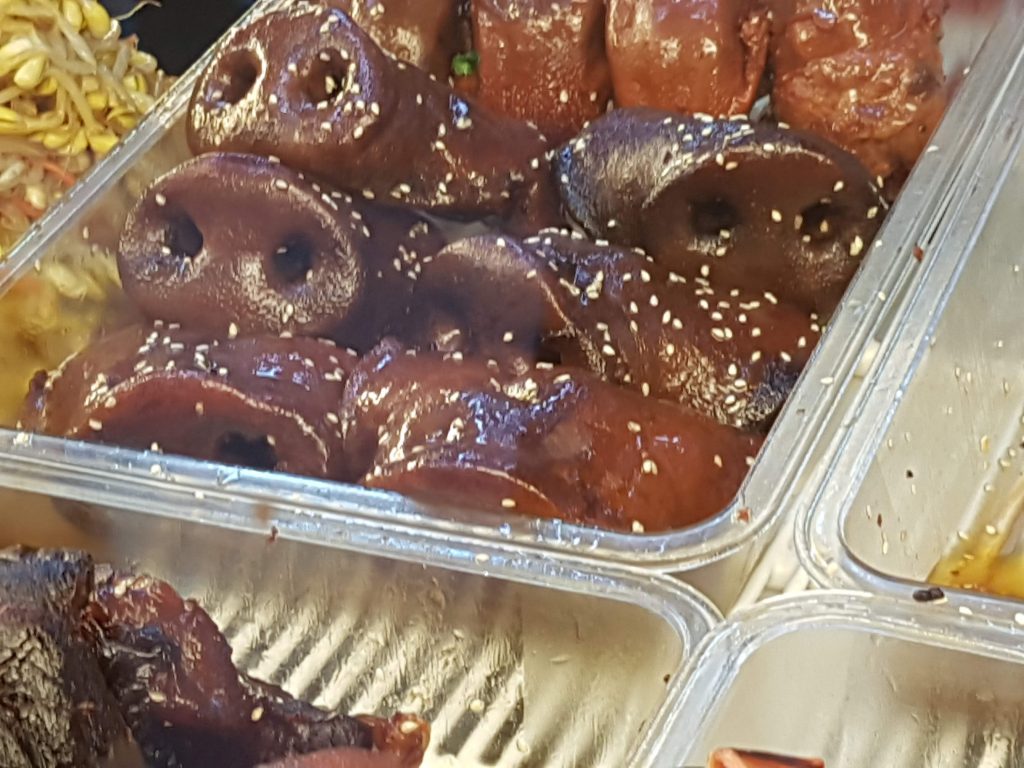
Pigs Snouts – Singapore 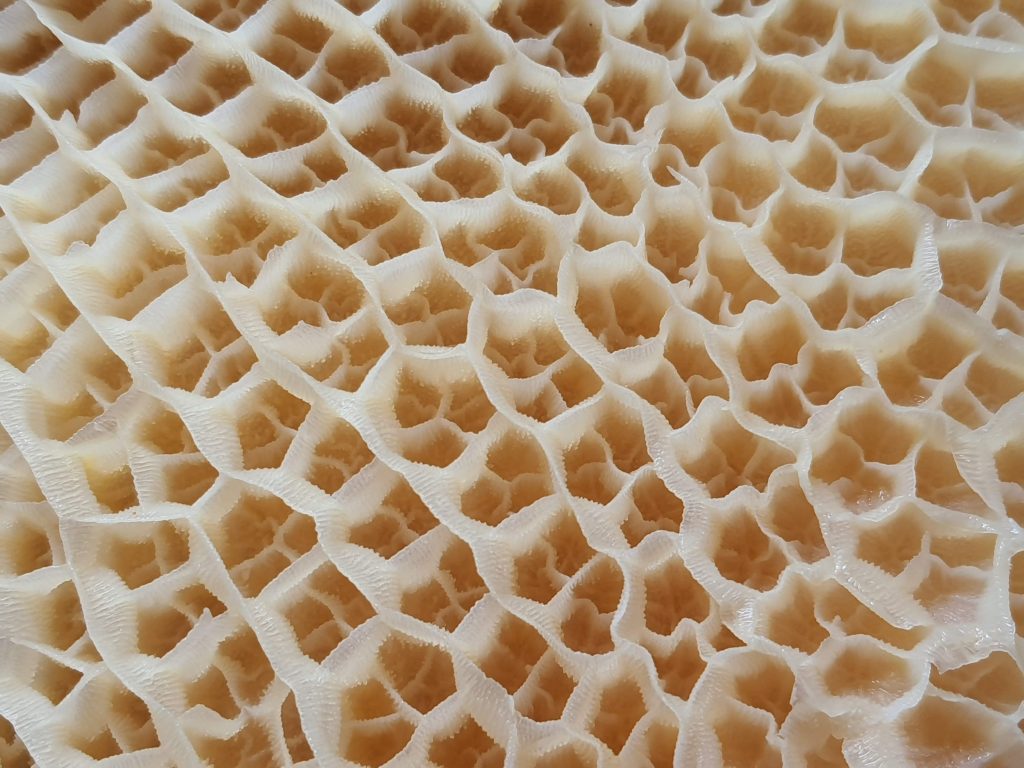
Tripe – Springvale
7 – HAGGIS – Haggis is a savoury meat dish, which is made from the liver, heart and lungs of a sheep, it also has onions oatmeal, suet and spices. All mixed together and stuffed into a sheep’s stomach. It is then boiled gently to prevent it from splitting. Haggis is the national dish of Scotland. What gives it its unique texture are the kibbled oats, which are used. It is traditionally served on Burns Night that is held on January the 25th, which is Burns’ birthday.
And also, Hogmanay as the Scots like to call New Years Eve. It is quite a ceremony. As a chef I have been at functions for Burns night in Scotland where a Piper pipes in the haggis and everyone has a dram or a few of Scotch whiskey to celebrate and toast the haggis. This is when the jokes normally come back out again about “catching the haggis” and “haggis hunting”. Haggis is usually served with Nips and Tatties. Which is Scottish for parsnips and potatoes. They are both served mashed. It can be quite a sloppy affair to serve up.
Despite the fact that Scottish people love the haggis, the English love it just as much and all over England on Burns night there are English people celebrating with the haggis. Any excuse to get the Scotch whiskey out.

8. LAMB SHANKS – Lamb Shanks have become very popular over the last 10 years or so. When I was a young chef, Lamb Shanks we’re basically a very cheap meal. When you placed your order with the butcher you asked him to throw in some lamb Shanks for the stockpot or the dog. The same as he would also throw in chickens’ feet for free or a cow foot for free to put in the stock. They all were basically giving to you for free as they were surplus to their requirements.
Some clever chefs even at the time would put them on the special’s menu as a cheap dish and make money for nothing. But then came along the TV Chefs and the Cooking Channel. And before you know it they were in the butcher’s windows as French trimmed lamb shanks at $9.99 a kilo. What a rip off. But you can’t blame the butchers. If people are happy to pay for them, they have to charge for them – Supply and demand. So, as you can expect they no longer appeared in the stockpots and the chef had to now start buying different things for his specials menu. The big loser was the chef’s dog that used to get all the scraps from the stockpot. Having said all that lamb shanks are beautiful. Braised in a nice tomato sauce and serve with Mashed potato, it is no wonder they are so popular. I just can’t help looking at the price and flashing back to the good old days.
9 – TONGUE. You would normally get ox tongue but there is also sheep’s tongue sometimes served. To cook the tongue, you first of all blanch it in hot water. After a minute or so you take it out and you plunge it into cold water. That way you can trim off the outer layer of the skin that comes off the tongue. Also, at the back of the tongue there is a fatty mass, which needs to be trimmed as well. Then put the clean and trimmed tongue back into the pot with onions, carrots, celery Bay Leaves and sprigs of herbs like thyme or sage. I also put in some peppercorns and some Juniper berries or allspice. I add a few drops of vinegar. Usually I boil it for about 40 minutes to an hour depending on the size. Then I place it into a dish about the same size as the tongue and pour the juice back over it and let it cool in its own liquor. This helps to retain the moisture in the tongue so it does not dry out.
Then you slice it’s as required when it has cooled. Slice and have it in a sandwich with lashings of mustard and roquette. Well that’s my choice anyway. The best place I normally have tongue is in Mexico, served in tacos. Tacos de Lengua must be one of the most popular tacos available on the streets besides beef and pork cheek. Topped with raw onions and coriander and your choice of Salsa Rojo or Salsa Verde. These are a must have for me whenever I’m in Mexico.
10. BRAWN. Brawn that is also known as headcheese is usually made from a pig’s head but also the head of a calf. The head is normally boiled with the likes of onions, carrots and celery – The Trinity. And also a few spices and herbs. And then the meat is pulled off the bone when it has cooled down some. The meat is then diced into cubes arranged into a terrine or dish. The cooking liquor is then strained and poured back on top of the meat and left until it sets like a jelly so it can be sliced.
Normally served in a sandwich or with salad. Brawn is really nice with some mustard or a nice sharp chutney like piccalilli.
See my other Blogs
Please comment if you have enjoyed or have any of your own tips to add to this blog.
Feel free to contact me if you would like any of the recipes in the Blog or if you need any cooking tips
Looking forward to your cooking tips if you have anything to contribute.
Your feedback would be appreciated by one and all.

